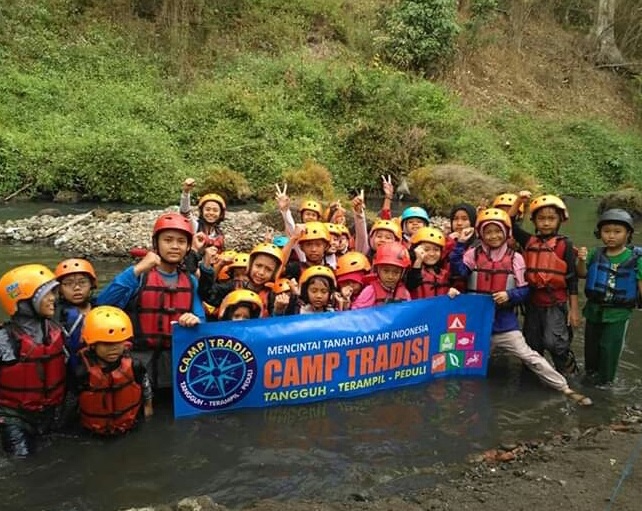BEFORE tracing a river, you should have prepared the scenario planning from the start. This is so that the activities can take place safely and pleasantly.
Zaeni Mansyur, Mapala member of UPN ‘Veterans’ Yogyakarta who is also a adventure activist through Jogja Adventure Kids gave tips. "This is a form of education from our Mapala UPN to the general public. Tracing a river is safe if it is prepared properly", he said to KRjogja.com, Sunday (02/23/2020).
One of the goals of this education is making the children not be afraid to explore Indonesia's nature, including tracing rivers.
There are many things that must be considered in the activity related to the landscape, the following are the tips.
(1) Study the River Map.
How many tributaries are there? How many 'battles' are the meeting points of the river. How far is the distance and travel time that the team will have?
(2) Information from the Local Community / Around the River
Information from the local communities is very important to note related to the local river habits that have stories in the rainy season from year to year.
(3) Entry and Exit Points
How many entry and exits points along the river related to the shape of the river banks and walls. Not only the start & finish point that must be prepared, but also a point to get out. At a distance of 500 meters, it is better to prepare an exit point.
(4) Walking from the ground up is safer
Walkint from the downstream to the top (upstream) is safer. Instead of walking down the river. By walking up the river, more stable footrests and hands can help in holding (scrambling).
Eye sight can monitor river walls and river color changes that can become turbid and increase in volume when there is rain in the upstream, therefore the orientation of the sky is also needed.
(5) Monitor Weather Development
The chance of rain is in the afternoon – evening at the height of the rainy season. It means that tracing the river in the morning is better. Meanwhile, monitor the weather developments.
(6) Keep your distance from the river.
The river has an edge / land with diverse vegetation and terrain. If there are edges that are quite difficult to break through because of the density of shrubs or it has rock fields, slopes, thin and steep walls, it can bounce out / away from the river's edge, then return to the path (river bank).
(7) Discipline by tracing on the River Side
Be discipline by waliking on the left or right bank of the river. If you want to cross the river, make sure the path is safe, the team is ready, the equipment is complete.
(8) Alert the Flood Submissions
Submissions flooded at the beginning of the rainy season usually is carrying additional materials, the remaining ones of the dry season; dried leaves, logs, bamboo, garbage and so on. The farthest overflow in the bank of the river can be seen from the rubbish stuck in a bamboo clump, the grass that collapses in the direction of the flow of water and mud that gives a mark on the wall of a bridge or a tree trunk on the river bank. (*)
Source:
Jl. SWK 104 (Lingkar Utara), Condongcatur, Yogyakarta 55283 (Kampus Pusat)
Jl. Babarsari 2 Yogyakarta 55281(Kampus Unit II) | Telp. +62 274 486733



